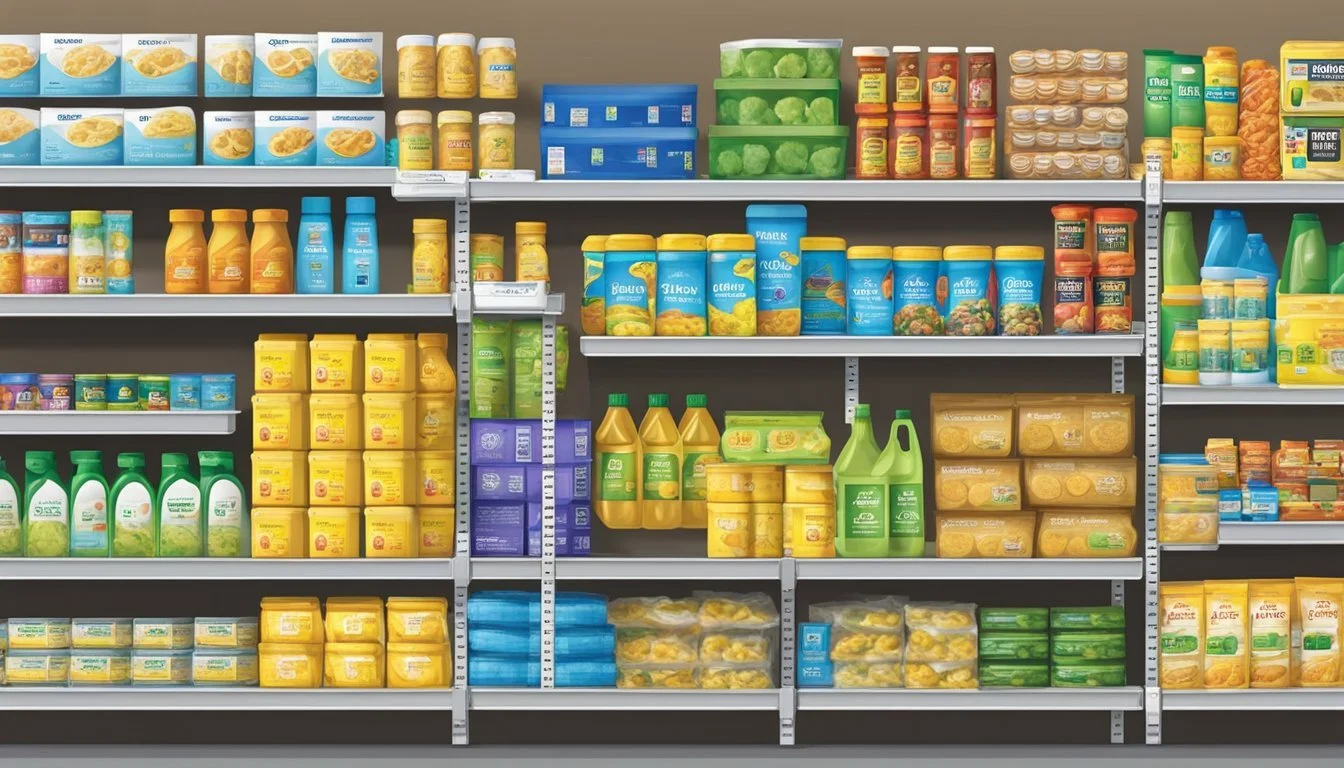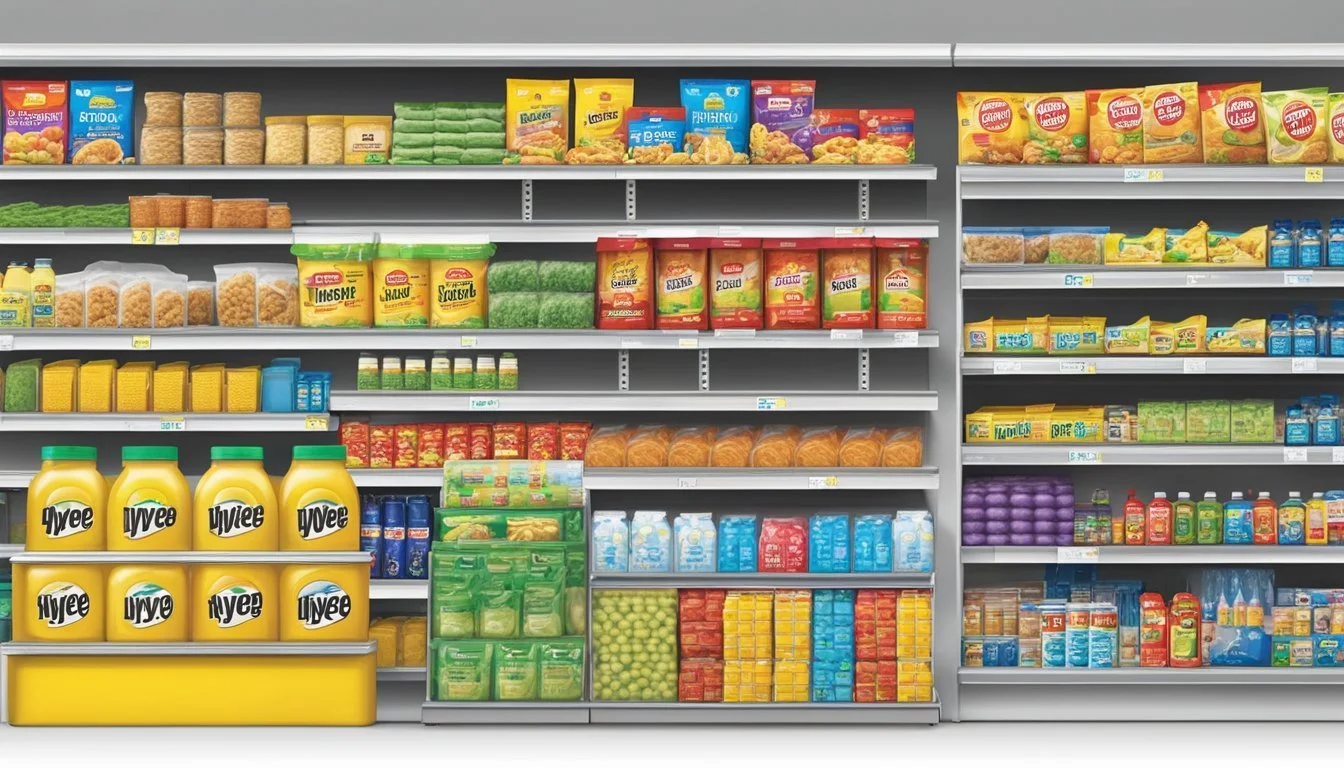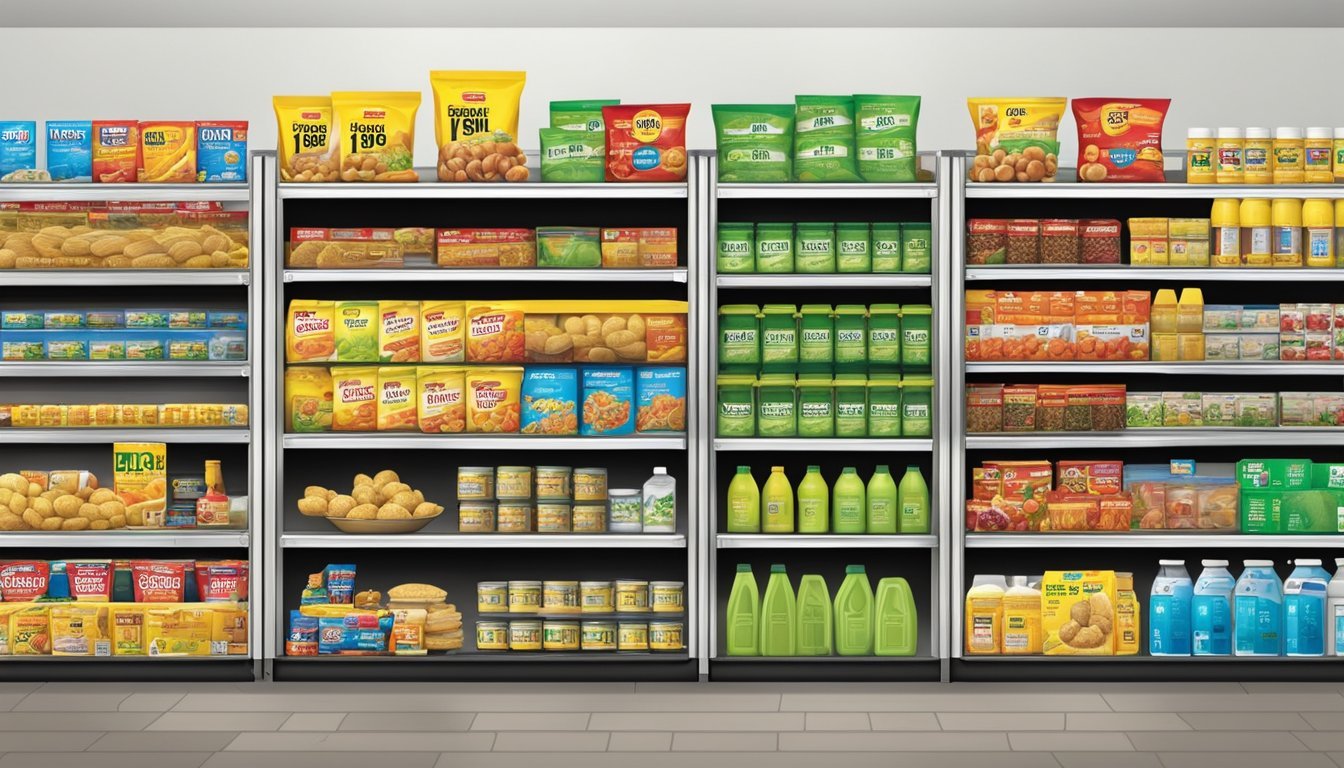Is Dollar General Cheaper Than Hy-Vee?
A Comprehensive Price Comparison
Dollar General and Hy-Vee are two popular retail chains that offer groceries and household items to consumers. While both stores aim to provide value, they cater to different market segments and have distinct pricing strategies.
Dollar General typically offers lower prices on many items compared to Hy-Vee. As a discount retailer, Dollar General focuses on providing affordable options for everyday essentials. Hy-Vee, on the other hand, is a full-service supermarket that offers a wider range of products, including fresh produce, meats, and prepared foods.
The price difference between these stores can vary depending on specific items and locations. Dollar General may have better deals on packaged goods and non-perishables, while Hy-Vee might offer competitive prices on fresh foods and specialty items. Shoppers looking to save money should compare prices on their most frequently purchased items at both stores to determine which offers the best overall value for their needs.
Understanding Grocery Store Pricing
Grocery store pricing involves complex strategies and factors that impact the final cost to consumers. Different retailers employ various approaches to attract customers while maintaining profitability.
Price Determinants in Retail
Product costs, operational expenses, and profit margins significantly influence grocery prices. Larger chains like Walmart and Kroger often negotiate better deals with suppliers due to their purchasing power. This allows them to offer lower prices on many items.
Location also plays a role. Stores in urban areas may have higher rent and labor costs, potentially leading to increased prices. Competitive landscapes in different regions can drive prices up or down.
Seasonal fluctuations affect pricing, especially for produce. During peak seasons, fruits and vegetables are often cheaper due to increased supply.
Differences Between Dollar Stores and Supermarkets
Dollar stores like Dollar General typically offer lower prices on many items compared to traditional supermarkets. They achieve this through various methods.
One strategy is selling smaller package sizes. This allows them to maintain low price points while reducing the actual quantity provided to customers.
Dollar stores often carry lesser-known brands or private label products, which are generally cheaper than national brands. They may also stock closeout or overstock items at discounted prices.
Traditional supermarkets like Hy-Vee usually offer a wider selection of products, including fresh produce, meats, and bakery items. These stores often provide higher quality or premium options alongside budget choices.
Price Comparison Strategies
To find the best deals, shoppers can employ several tactics:
Use store apps or websites to compare prices
Check weekly ads for sales and promotions
Join loyalty programs for exclusive discounts
Consider store brands for lower-priced alternatives
Discount chains like Aldi and Lidl focus on offering consistently low prices across their limited selection. Warehouse clubs such as Costco provide bulk quantities at reduced per-unit costs.
Online retailers like Amazon have entered the grocery market, often offering competitive prices and convenient delivery options. However, their prices can vary widely depending on the specific item and seller.
Analyzing Dollar General's Pricing Model
Dollar General employs a distinctive pricing strategy focused on providing low-cost products to budget-conscious consumers. The company's approach combines discounted brand-name items, private labels, and strategic store locations to offer competitive prices.
Dollar General's Discount Pricing Approach
Dollar General sells most items at 20% to 40% less than full-price retailers. The majority of products are priced under $10, catering to price-sensitive shoppers. To maintain these low prices, Dollar General implements several cost-cutting measures:
No-frills store layouts with minimal decor
Limited staff to reduce labor costs
Streamlined product assortment
Efficient supply chain management
These strategies allow Dollar General to pass savings on to customers while maintaining profitability. The company's focus on everyday low prices attracts repeat customers seeking value.
Store Brands and Exclusive Deals at Dollar General
Dollar General offers a mix of national brands and private label products. Their store brands provide cheaper alternatives to name-brand items across various categories:
DG Home (household goods)
Clover Valley (food products)
Smart & Simple (affordable basics)
These private labels typically offer 20-30% savings compared to national brands. Dollar General also negotiates exclusive deals with suppliers for popular products, further reducing costs.
The company's limited assortment model allows for bulk purchasing, enabling better pricing on select items.
Dollar General in Rural Communities
Dollar General has a strong presence in rural areas, often serving as the primary retailer in small towns. This strategy provides several advantages:
Lower real estate costs
Reduced competition from large chains
Loyal customer base with limited shopping options
In these communities, Dollar General's low prices and convenient locations make it an essential shopping destination. The company's small-format stores fit well in areas that can't support larger retailers.
Dollar General's rural focus allows it to capture market share in underserved regions while maintaining its low-cost business model.
Assessing Hy-Vee's Market Positioning
Hy-Vee positions itself as a high-quality grocer focused on customer experience and specialized offerings. The company aims to differentiate from discount chains through premium services and products.
Hy-Vee's Focus on Quality and Experience
Hy-Vee emphasizes fresh, high-quality products to attract discerning shoppers. The chain sources local and organic produce when possible. Store layouts are designed for easy navigation and a pleasant shopping experience.
Hy-Vee invests in employee training to provide knowledgeable, friendly service. Many locations offer amenities like in-store dining, coffee shops, and wine & spirits departments.
The company targets families and health-conscious consumers. Stores stock a wide range of natural, organic, and specialty diet products.
Hy-Vee's Specialty Departments
Hy-Vee's in-store bakeries produce fresh breads, cakes, and pastries daily. Many locations have full-service meat and seafood counters with trained butchers.
The deli department offers prepared foods, sandwiches, and catering services. Some stores feature upscale food court concepts like Fourth + Court.
Hy-Vee pharmacies provide medication counseling, immunizations, and health screenings. The HealthMarket section stocks vitamins, supplements, and natural remedies.
Hy-Vee's Customer Loyalty Programs
The Hy-Vee Fuel Saver + Perks program lets shoppers earn discounts on gas. Members receive personalized coupons and digital deals through the Hy-Vee app.
Hy-Vee Plus premium membership offers additional savings, free delivery, and exclusive access to popular products. The company uses these programs to drive repeat visits and increase basket sizes.
Hy-Vee's loyalty initiatives aim to compete with both traditional supermarkets and emerging online grocery services. The programs provide valuable customer data to inform marketing and merchandising decisions.
Comparative Analysis of Product Categories
Dollar General and Hy-Vee offer different shopping experiences and product selections. Their pricing strategies vary across key grocery categories, impacting overall affordability for consumers.
Pantry Staples and Dry Goods
Dollar General typically offers lower prices on pantry staples and dry goods compared to Hy-Vee. Pasta, canned tomatoes, and other shelf-stable items are often significantly cheaper at Dollar General.
A comparison of common items reveals:
Item Dollar General Hy-Vee Pasta (1 lb) $0.95 $1.29 Canned Tomatoes (14.5 oz) $0.75 $0.99 Rice (2 lb) $1.50 $1.89
Dollar General's focus on budget-friendly options makes it an attractive choice for cost-conscious shoppers seeking basic pantry items.
Fresh Produce and Meat Selection
Hy-Vee generally outperforms Dollar General in fresh produce and meat offerings. While Dollar General has expanded its fresh food selection, Hy-Vee provides a wider variety and higher quality.
Hy-Vee's produce section features a broader range of fruits and vegetables, including organic options. Their meat department offers diverse cuts and premium selections.
Dollar General's limited fresh produce and meat options are usually priced competitively but may lack the variety and quality found at Hy-Vee.
Dairy, Frozen Goods, and Bakery Items
In the dairy category, Dollar General often offers lower prices on staples like milk and eggs. A gallon of milk at Dollar General might cost $2.50 compared to $2.99 at Hy-Vee.
Frozen goods pricing is competitive at both stores, with Dollar General sometimes offering better deals on basic items. Hy-Vee, however, provides a wider selection of premium and specialty frozen products.
Hy-Vee's bakery department is more extensive, featuring freshly baked goods and custom cakes. Dollar General's bakery offerings are limited to pre-packaged items but are generally priced lower.
Consumer Shopping Behaviors
Shoppers today are increasingly focused on value and savings when making purchasing decisions. They compare prices across stores and seek out deals to stretch their budgets further. Convenience also plays a major role in where consumers choose to shop for groceries and household items.
Understanding Consumer Value Perception
Consumers perceive value through a combination of price, quality, and convenience. Many shoppers are willing to switch brands or stores to save money. According to recent data, 75% of U.S. consumers have tried new shopping behaviors in response to economic pressures and changing priorities. Price comparisons between stores like Dollar General and Hy-Vee are common as shoppers look to maximize savings.
Some consumers view discount chains as offering better value, while others prefer traditional supermarkets for selection and quality. Store loyalty has decreased as shoppers become more price-sensitive. Many are turning to secondhand shopping as another way to find deals on non-grocery items.
Shopping Habits and Store Preference
Grocery chains and discount stores are adapting to changing consumer habits. Dollar stores have seen increased traffic and sales growth as budget-conscious shoppers seek low prices. In 2020, Dollar General reported a 24.4% increase in net sales and opened 500 new locations.
Traditional grocers like Hy-Vee face pressure to remain competitive on pricing. Some consumers perceive Hy-Vee as more expensive than discount chains. However, factors like product quality, customer service, and store atmosphere also influence where people shop.
Convenience is key for many shoppers. They may opt for nearby stores even if prices are slightly higher. Online grocery ordering and delivery have also grown in popularity as consumers seek time-saving options.
Supplemental Services and Perks
Dollar General and Hy-Vee offer distinct supplemental services and perks to enhance the shopping experience. These include loyalty programs, diverse shopping options, and additional amenities.
Membership and Reward Programs
Dollar General provides the DG Digital Coupons program, allowing customers to save money on select items. Shoppers can easily clip digital coupons on the app or website for instant savings at checkout.
Hy-Vee offers the PERKS program, a free rewards system for all customers. Members earn points on purchases and gain access to exclusive discounts. The PERKS Plus membership, available for a fee, provides additional benefits like free delivery and pickup services.
Both programs aim to provide value, but Hy-Vee's tiered system offers more comprehensive rewards for frequent shoppers.
In-store and Online Shopping Experience
Dollar General focuses on a no-frills, value-oriented shopping experience. Stores are typically smaller, making them convenient for quick trips. The company has also expanded its digital presence, offering online ordering with in-store pickup options.
Hy-Vee provides a more traditional grocery store experience with larger stores and a wider product selection. Their Aisles Online service allows customers to shop for groceries from home, with options for pickup or delivery.
Hy-Vee's Fast & Fresh stores combine elements of convenience stores with fresh food options, bridging the gap between full-service grocery and quick-stop shopping.
Additional Services Offered
Dollar General has begun introducing fresh produce in select stores, expanding its grocery offerings. Some locations also feature a limited selection of over-the-counter medications.
Hy-Vee offers a broader range of supplemental services. Many stores include full-service pharmacies, providing prescription medications and health consultations. Some locations feature in-store dining options, wine and spirits sections, and even clothing departments.
Hy-Vee's Mealtime To Go service offers prepared meals for easy pickup, catering to busy families seeking convenient dinner solutions.
While Dollar General prioritizes basic necessities and value, Hy-Vee aims to be a one-stop shop for a wider array of household needs.
Impact on Local and National Economy
Dollar General and Hy-Vee have distinct influences on local and national economies. Their business models affect employment, community development, and consumer spending patterns in different ways.
Employment and Economic Influence
Dollar General operates over 18,000 stores across the United States, primarily in rural and low-income areas. The company provides jobs in communities where employment opportunities may be limited. Dollar General's expansion creates new positions, but these roles often offer lower wages and fewer benefits compared to traditional retailers.
Hy-Vee, a regional grocery chain, employs around 86,000 people across its 285 stores in the Midwest. The company is known for offering more comprehensive benefits packages and career advancement opportunities. Hy-Vee's larger format stores typically require more staff per location than Dollar General's smaller outlets.
Both companies contribute to local tax bases, supporting public services and infrastructure.
Contribution to Local Communities
Dollar General's presence in rural areas provides access to affordable goods for consumers with limited shopping options. The company's low-cost model can help stretch budgets for low-income households. However, the influx of dollar stores may negatively impact existing local businesses and potentially reduce economic diversity in small towns.
Hy-Vee often takes a more active role in community engagement. The company frequently sponsors local events, supports schools, and participates in charitable initiatives. Hy-Vee's larger stores can serve as anchor businesses in shopping centers, attracting other retailers and fostering economic growth.
Both retailers influence consumer spending patterns, with Dollar General focusing on everyday essentials and Hy-Vee offering a wider range of products and services.
Conclusion
Dollar General and Hy-Vee offer different shopping experiences for consumers seeking value. Dollar General focuses on providing low-cost items across various categories. Hy-Vee, as a traditional grocery store, offers a wider selection of fresh foods and name brands.
Price-conscious shoppers may find better deals on certain items at Dollar General. The company's business model allows for competitive pricing on many household essentials and packaged goods.
Hy-Vee likely has an edge when it comes to fresh produce, meats, and specialty items. Their larger stores provide more options for consumers looking for specific brands or products.
The best choice depends on individual shopping needs. Dollar General suits quick trips for basic items at budget-friendly prices. Hy-Vee is better for comprehensive grocery shopping with a focus on fresh foods.
Consumers benefit from comparing prices between the two stores. Some may find a mix of shopping at both retailers helps maximize savings and meet diverse household needs.
Ultimately, the "cheaper" option varies based on specific products and personal preferences. Savvy shoppers can leverage the strengths of each store to optimize their grocery budget.









